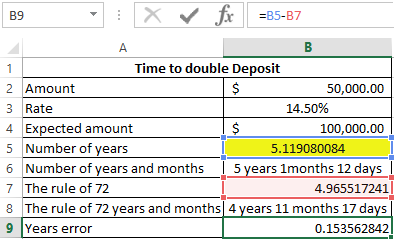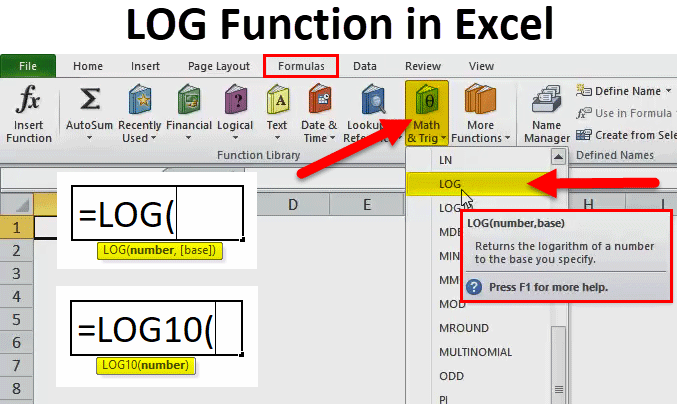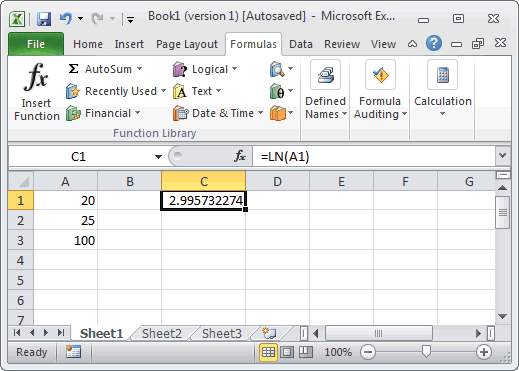- Base Of Natural Log In Excel
- Natural Log Regression In Excel
- E In Excel
- How To Calculate Natural Log In Excel
- Natural Log In Excel Formula
Understanding Log Return and Continuous Compounding
Intermediate

Base Of Natural Log In Excel
- The Excel LN function calculates the natural logarithm of a given number. The syntax of the function is: LN (number) where the number argument is the positive real number that you want to calculate the natural logarithm of.
- A natural logarithm is a logarithm that has a special base. In this tutorial, you'll be introduced to natural logarithms! Further Exploration. Natural Logarithms.
Excel will automatically adjust the formula: in row 3, it becomes =LN(B3) etc. Another option: select the cell with the formula in row 2. The lower right corner of the cell is a little black square, called the fill handle. Drag this fill handle down to the cells below. Excel will copy the formula and automatically adjust it. The natural logarithm function ln(x) is the inverse function of the exponential function e x. When the natural logarithm function is: f (x) = ln(x), x0. Then the inverse function of the natural logarithm function is the exponential function: f-1 (x) = e x. The EXP function lets you use the value of e and raise it to any power to get the result. The syntax for the EXP function is quite simple: =EXP (value) Here, EXP returns the value of constant e raised to the power of the given value. For example, the function =EXP (5) will return the value of e5. Similarly, even if you want to find the value of.
Log Return is one of three methods for calculating return and it assumes returns are compounded continuously rather than across sub-periods. It is calculated by taking the natural log of the ending value divided by the beginning value. (Using the LN on most calculators, or the =LN() function in Excel)
Synonyms: logarithmic return, continuously compounded return
For context, it's important to recall from high school math that the letter e is a constant value rounded to 2.71828. The unrounded number e can be found in Excel using =EXP(1).
Much like pi which describes the ratio of circumference to the diameter of all circles, e can be used to quantify all continuously compounding processes like inflation, interest rates, population growth and even radioactive decay.
For practicality in Finance however, banks don't pay interest on a continuously compounding basis, so keep that in mind.
How to Calculate Log Returns
As an example to find a continuously compounding rate of return, let's say the ending value of an investment was $11 and the beginning value was $10. The Excel function would read =LN(11/10) for a result of 9.53%.
To calculate a continuously compounded ending value on a $100 investment at 3% per year for 5 years would result in an ending value of $116.18, using the formula:
- Ending Value = Beginning Value * (e)^(rate * time)
- $116.18 = $100 * 2.71828^(0.03 * 5)
In math and statistics, a distinction is often made between discrete and continuous data. Log return is the more theoretical continuous version. In the practical world, however, most people think of returns broken into discrete periods instead.
- Arithmetic return - One period, not-compounded, discrete.
- Geometric return - Multi-period, compounded, discrete.
- Logarithmic return - Infinite-periods, compounded, continuous.
The corresponding ending value using non-compounded returns (arithmetic) would yield $115.00. If compounded five times (geometric) the ending value would be $115.93.
So log return is the non-discrete version, so continuous, meaning it answers what the ending value would be if the whole period was broken into an infinite number of sub-periods. See, it's theoretical.
Other than for very short periods of time (typically less than 1 day), and for theoretical applications involving calculus and precisely measuring curves and tests for the normality of investment return distributions, log returns are not as common as arithmetic and geometric returns.
In a Sentence
Tom: If log return compounds most frequently, why is the rate the lowest?
Doc: Chew on this. Let's say $1 grew to $1.10 in a year; the non-compounding return is 10%.
Video
Many terms have 4-5 minute videos showing a derivation and explanation. If this term had one, it would appear here.

Videos can also be accessed from our YouTube Channel.
Video Script
If this term had a video, the script would be here.
Quiz
Click box for answer.
False. It is best suited for daily or hourly periods.
Natural Log Regression In Excel
$2,013.75. The others represent arithmetic and geometric total returns, respectively. To confirm type =LN(2013.75/1000) in Excel to get 7%.
Questions or Comments?
Still unclear on log returns? Check out the tutorial page and video on Stock return calculation methods from the Quant 101 Series on YouTube. There we go over when to use arithmetic, geometric and log returns.
Related Terms
Our trained humans found other terms in the category return math you may find helpful.
-->Returns a Double specifying the natural logarithm of a number.
Syntax
Log(number)
The required numberargument is a Double or any valid numeric expression greater than zero.
Remarks
The natural logarithm is the logarithm to the base e. The constante is approximately 2.718282.

You can calculate base-n logarithms for any number x by dividing the natural logarithm of x by the natural logarithm of n as follows:
Logn(x) = Log(x) / Log(n)
The following example illustrates a custom Function that calculates base-10 logarithms:
Example
E In Excel
This example uses the Log function to return the natural logarithm of a number.
See also
How To Calculate Natural Log In Excel
Support and feedback
Natural Log In Excel Formula
Have questions or feedback about Office VBA or this documentation? Please see Office VBA support and feedback for guidance about the ways you can receive support and provide feedback.